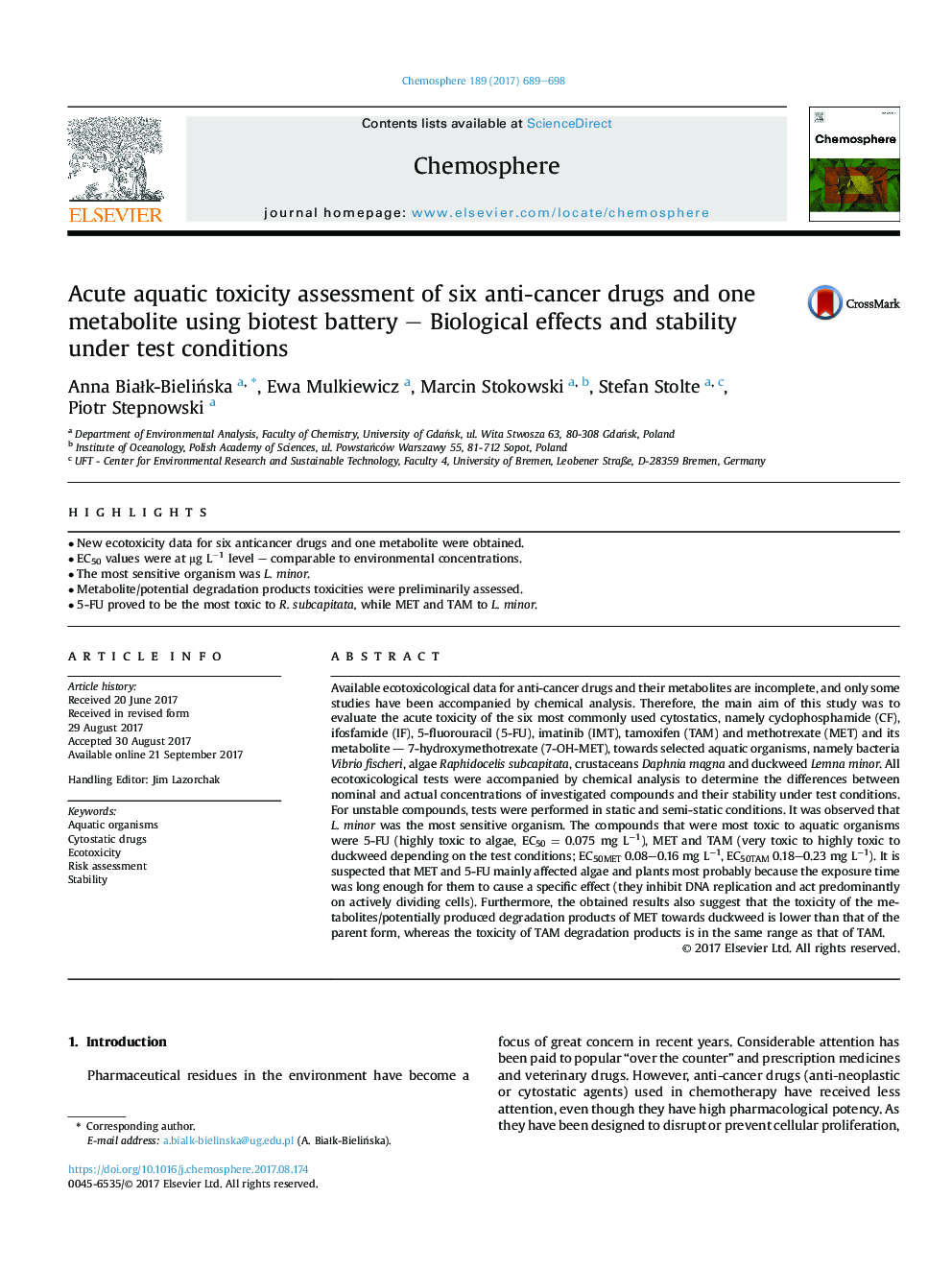| کد مقاله | کد نشریه | سال انتشار | مقاله انگلیسی | نسخه تمام متن |
|---|---|---|---|---|
| 5745900 | 1618782 | 2017 | 10 صفحه PDF | دانلود رایگان |
- New ecotoxicity data for six anticancer drugs and one metabolite were obtained.
- EC50 values were at μg Lâ1 level - comparable to environmental concentrations.
- The most sensitive organism was L. minor.
- Metabolite/potential degradation products toxicities were preliminarily assessed.
- 5-FU proved to be the most toxic to R. subcapitata, while MET and TAM to L. minor.
Available ecotoxicological data for anti-cancer drugs and their metabolites are incomplete, and only some studies have been accompanied by chemical analysis. Therefore, the main aim of this study was to evaluate the acute toxicity of the six most commonly used cytostatics, namely cyclophosphamide (CF), ifosfamide (IF), 5-fluorouracil (5-FU), imatinib (IMT), tamoxifen (TAM) and methotrexate (MET) and its metabolite - 7-hydroxymethotrexate (7-OH-MET), towards selected aquatic organisms, namely bacteria Vibrio fischeri, algae Raphidocelis subcapitata, crustaceans Daphnia magna and duckweed Lemna minor. All ecotoxicological tests were accompanied by chemical analysis to determine the differences between nominal and actual concentrations of investigated compounds and their stability under test conditions. For unstable compounds, tests were performed in static and semi-static conditions. It was observed that L. minor was the most sensitive organism. The compounds that were most toxic to aquatic organisms were 5-FU (highly toxic to algae, EC50 = 0.075 mg Lâ1), MET and TAM (very toxic to highly toxic to duckweed depending on the test conditions; EC50MET 0.08-0.16 mg Lâ1, EC50TAM 0.18-0.23 mg Lâ1). It is suspected that MET and 5-FU mainly affected algae and plants most probably because the exposure time was long enough for them to cause a specific effect (they inhibit DNA replication and act predominantly on actively dividing cells). Furthermore, the obtained results also suggest that the toxicity of the metabolites/potentially produced degradation products of MET towards duckweed is lower than that of the parent form, whereas the toxicity of TAM degradation products is in the same range as that of TAM.
Journal: Chemosphere - Volume 189, December 2017, Pages 689-698
